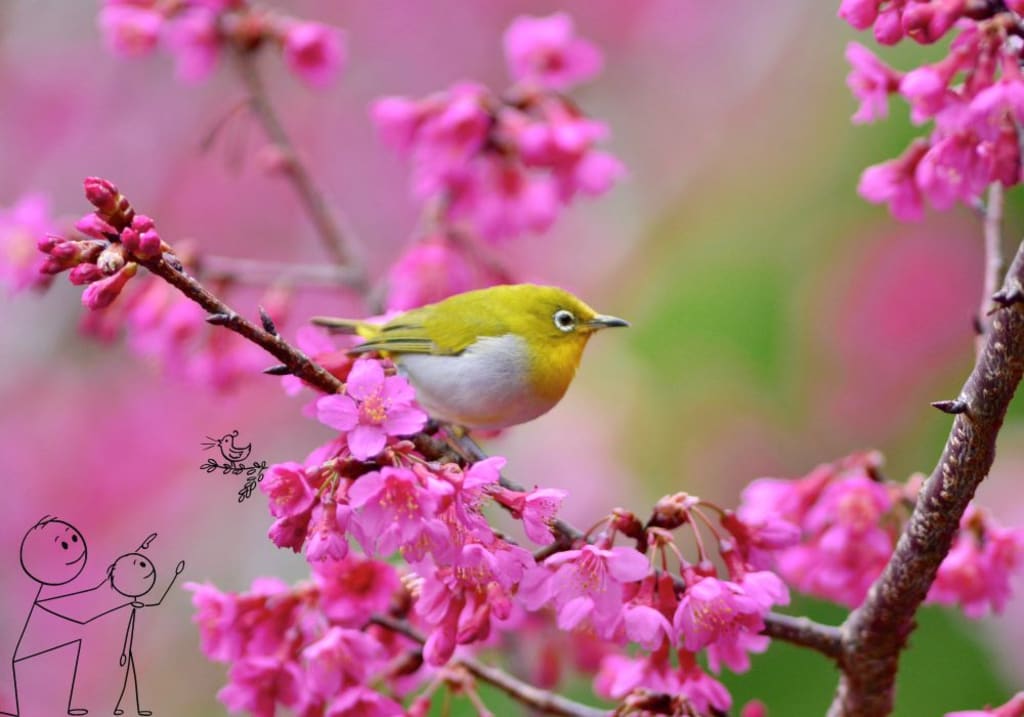
Discover the Joy of Birdwatching and Share It with Others
Birdwatching, also known as birding, is a fascinating hobby that allows you to connect with nature, learn about different species, and enjoy the outdoors. If you're passionate about birdwatching and want to share your love for it with others, starting a bird watching club can be a rewarding experience. In this comprehensive guide, we'll walk you through the steps to create a successful bird watching club and attract like-minded individuals to join you on your avian adventures.
Step 1: Determine Your Club's Purpose and Goals
Before you start, it's essential to define the purpose and goals of your bird watching club. Ask yourself the following questions:
- What do you hope to achieve with the club?
- Do you want to focus on education, conservation, or simply enjoying the hobby together?
- Will you target a specific age group or cater to a diverse audience?
- Having a clear vision will help you shape the club's activities, events, and overall direction.
Step 2: Gather a Core Group of Interested Individuals
Reach out to friends, family members, or acquaintances who share your passion for birdwatching. Invite them to a meeting to discuss the idea of starting a club and gauge their interest. This core group will help you make decisions, plan events, and spread the word about your club.
Step 3: Choose a Name and Create a Logo
Select a name that reflects the purpose and personality of your club. Keep it simple, memorable, and easy to pronounce. Once you have a name, design a logo that represents your club's identity. You can hire a graphic designer or use online tools to create a professional-looking logo.
Step 4: Establish a Meeting Schedule and Location
Decide on a regular meeting schedule that works for most of your members. This could be weekly, monthly, or quarterly, depending on your club's needs. Choose a location that is easily accessible, comfortable, and suitable for your activities. Consider public parks, nature centers, or community spaces.
Step 5: Develop a Club Structure and Bylaws
Determine the club's structure, including leadership roles and responsibilities. Will you have a president, vice president, treasurer, and secretary? Will you have a board of directors or a more informal structure? Establish bylaws that outline the club's rules, membership requirements, and decision-making processes.
Step 6: Promote Your Club and Attract Members
To grow your club, you need to spread the word and attract new members. Use various channels to promote your club, such as:
- Social media platforms like Facebook, Twitter, and Instagram
- Local newspapers, magazines, and radio stations
- Community bulletin boards and flyers
- Partnering with local nature organizations or bird clubs
Offer incentives for new members, such as a welcome packet, discounts on merchandise, or exclusive events.
Step 7: Plan Engaging Activities and Events
The heart of your bird watching club lies in the activities and events you organize. Plan a variety of events to cater to different interests and skill levels, such as:
- Guided bird walks and hikes
- Birdwatching field trips to local hotspots or nearby parks
- Workshops on bird identification, photography, or sketching
- Citizen science projects like bird counts or monitoring programs
- Social events like picnics, potlucks, or bird-themed parties
- Collaborate with local experts, such as birders, naturalists, or ornithologists, to lead workshops or guided walks.
Step 8: Maintain Communication and Engagement
Keep your members informed and engaged by regularly communicating with them. Use a combination of email newsletters, social media updates, and in-person announcements to share club news, upcoming events, and interesting bird sightings. Encourage members to share their experiences, photos, and stories to foster a sense of community.
Step 9: Seek Partnerships and Sponsorships
To support your club's activities and growth, consider seeking partnerships and sponsorships. Reach out to local businesses, nature organizations, or conservation groups that align with your club's values and goals. Offer advertising opportunities, joint events, or discounts to members in exchange for their support.
Step 10: Continuously Evaluate and Improve
As your club grows, regularly evaluate its effectiveness and make adjustments as needed. Gather feedback from members, assess the success of your events, and identify areas for improvement. Be open to new ideas and suggestions, and adapt your club's approach to better serve the needs and interests of your members.
Conclusion
Starting a bird watching club is a rewarding way to share your passion for nature, learn about different bird species, and connect with like-minded individuals. By following these steps and staying committed to your club's purpose, you can create a thriving community that celebrates the beauty and wonder of birds. Happy birding!
About the Creator
Hasan
Welcome...
In this site of mine you can learn amazing things and many information that you don't know so please subscribe to my site.
Enjoyed the story? Support the Creator.
Subscribe for free to receive all their stories in your feed. You could also pledge your support or give them a one-off tip, letting them know you appreciate their work.






Comments
There are no comments for this story
Be the first to respond and start the conversation.